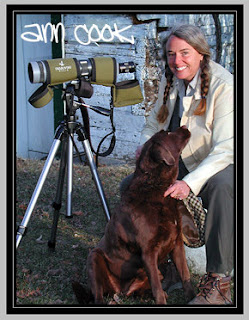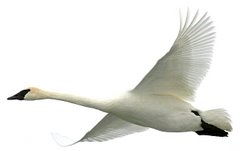Ann Cook
 Whenever I get impatient with my camera equipment, wishing for larger, more expensive telephoto lenses -- whenever, I wish I could travel far and wide, even within the U.S. to capture shots of exciting, new birds -- whenever I think I've taken a really good photo that could compete with the best out there -- I try to remember to go to Ann Cook's digiscoping web site.
Whenever I get impatient with my camera equipment, wishing for larger, more expensive telephoto lenses -- whenever, I wish I could travel far and wide, even within the U.S. to capture shots of exciting, new birds -- whenever I think I've taken a really good photo that could compete with the best out there -- I try to remember to go to Ann Cook's digiscoping web site.
For those not familiar with digiscoping, it is the taking of photographs with a digital camera (usually a modestly priced, simple model) attached to a spotting scope (which is the equivalent of a very large telephoto lens).
The advantage of digiscoping is cost. Granted Ann uses a Swarovski scope which costs about $2,000. However, her camera is a long-discontinued Nikon Coolpix 990 very similar to my 995 with which I took the recent photos at the Springbrook Nature Center; it can be bought on eBay for less than $150. I use mine mostly for background scenery photos. Add the cost of a scope eye-piece and tripod and you're still under $2,500. The Canon 500mm lens I covet is well over $5,000. A professional Canon DSLR body is easily another $5,000.
The disadvantage is that the spotting scope is the equivalent of a very slow telephoto requiring slow shutter speeds -- difficult to use, particularly with smaller birds that like to keep moving. Another problem is that of vibration. It is hard to eliminate it when you are using the equivalent of a 1000mm - 2000mm lens. Finally, at a magnification of 20x to 40x, it can be impossible to find your target, especially if it is moving. Ann Cook has obviously overcome these obstacles.
Do you think you have to go far and wide to get good bird pix? Ann says she rarely travels more than an hour's drive from her home in Manitoba.
So what kind of results does she get? I could easily run out of adjectives. Take a look for yourself.
To learn more about digiscoping, check out, Digibird, Digisco, Digiscoping Birds, and Digiscoped.

